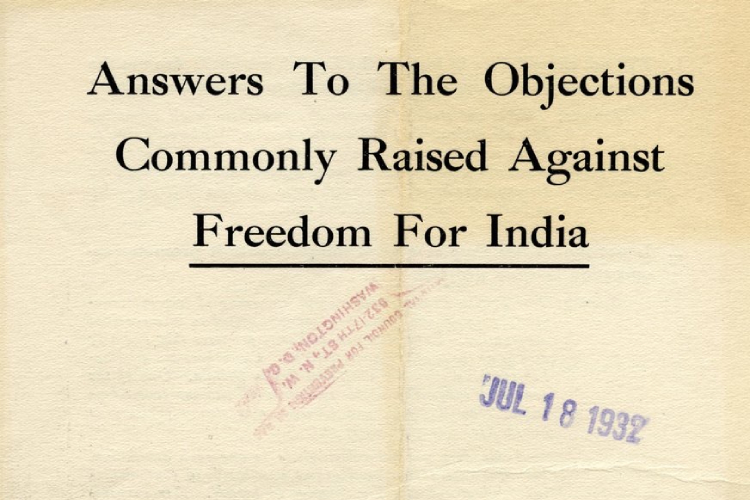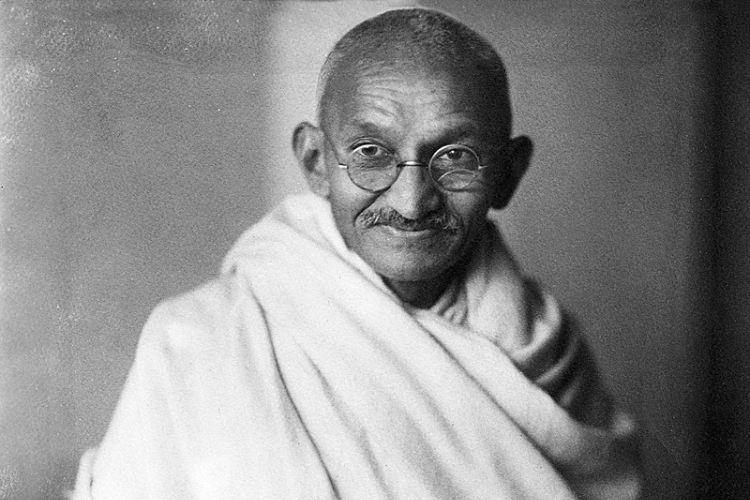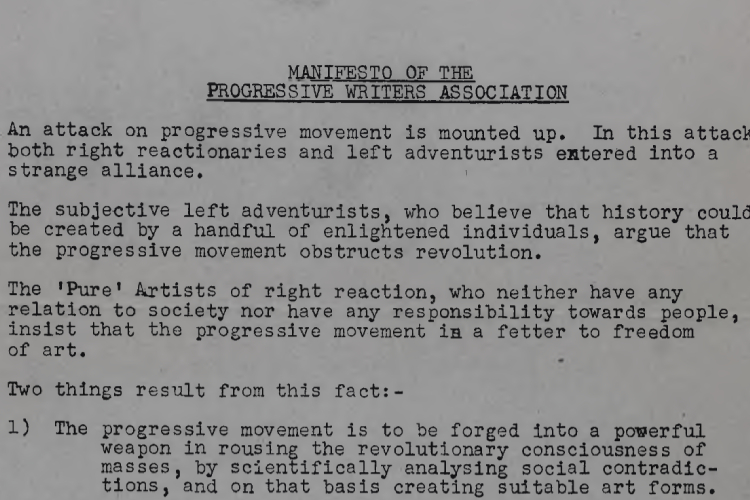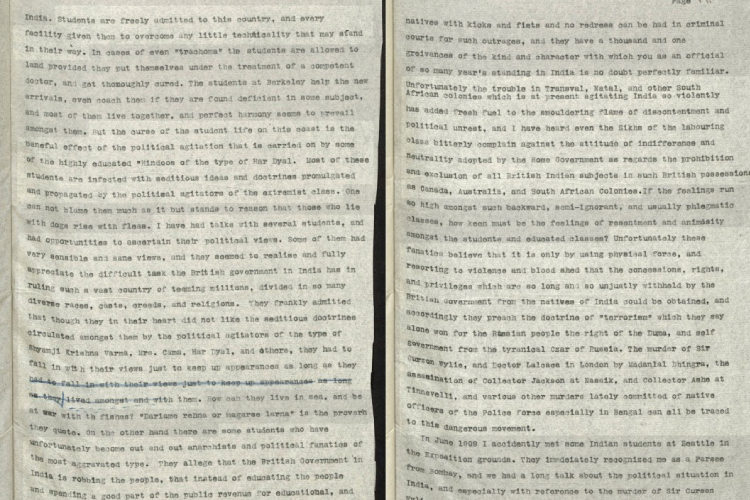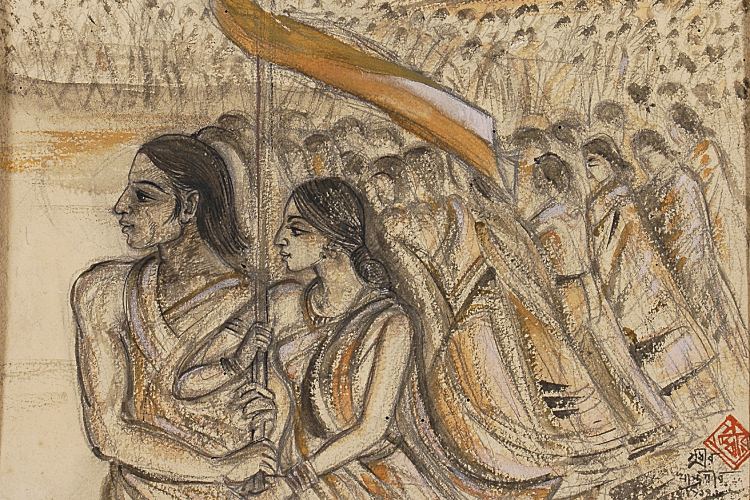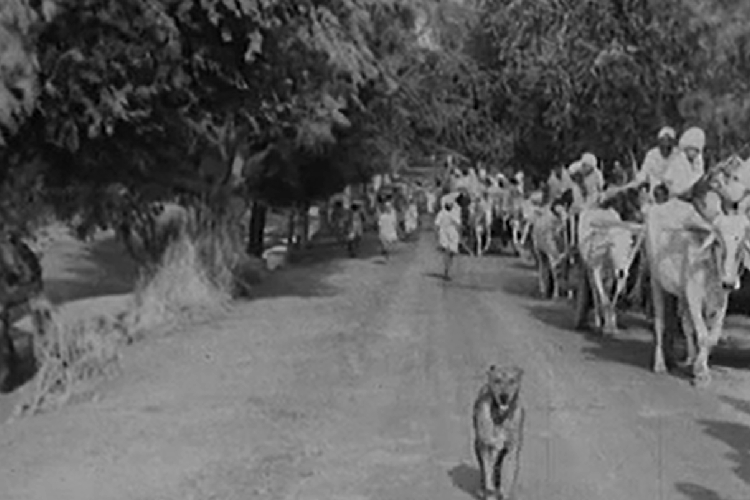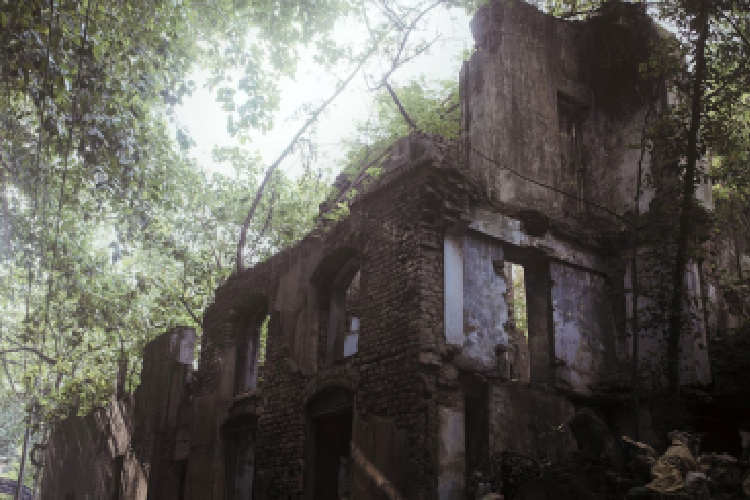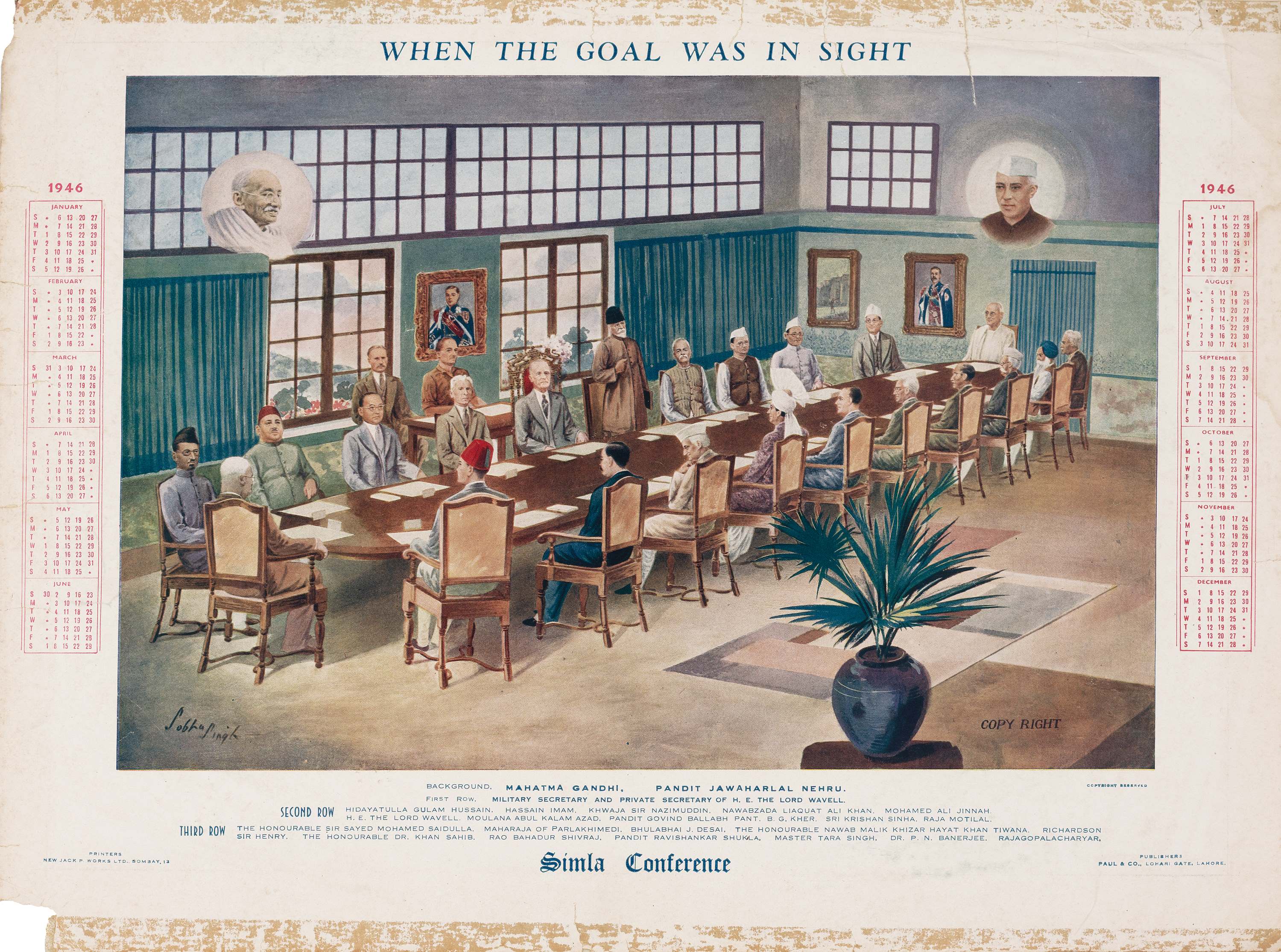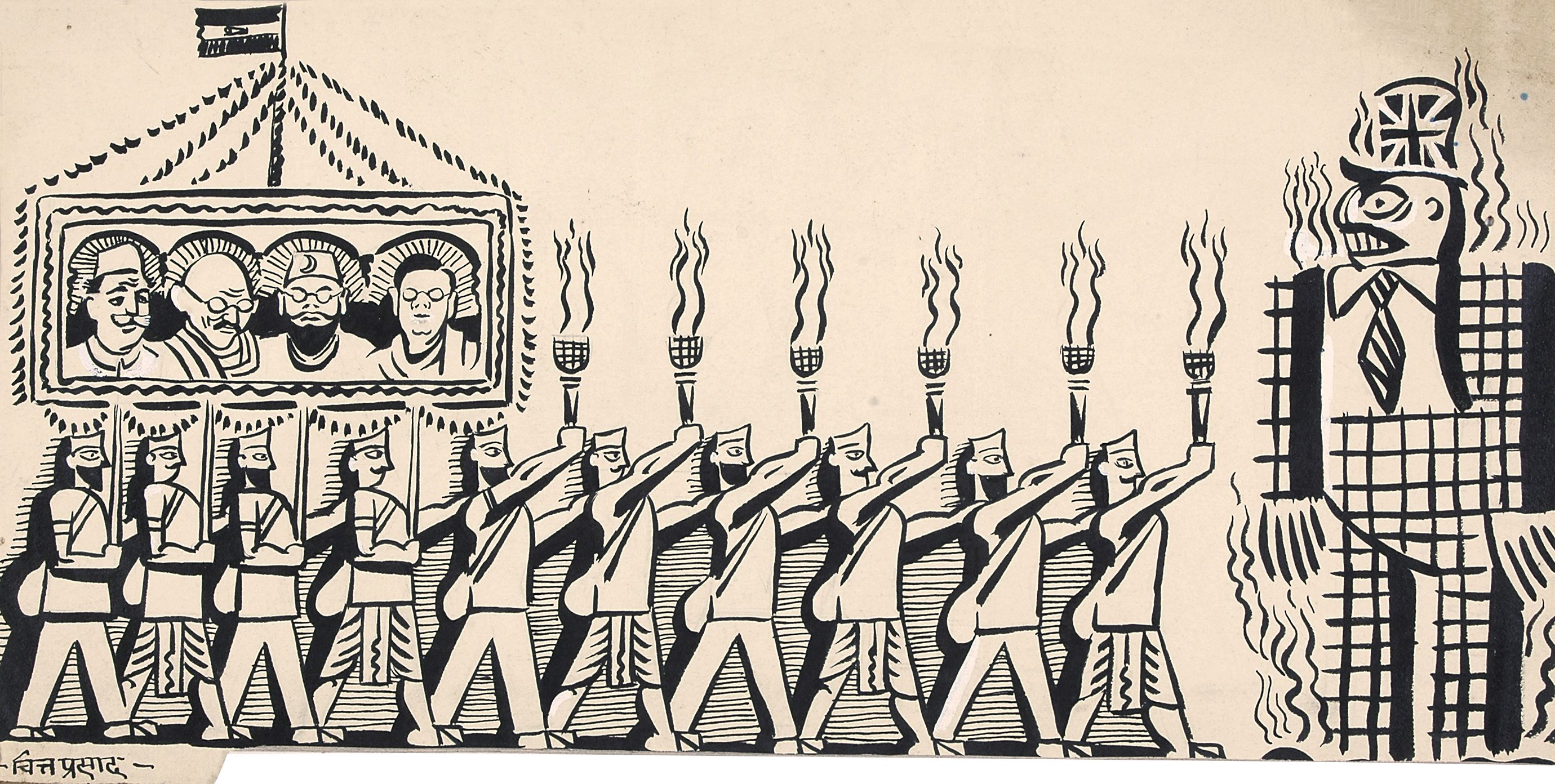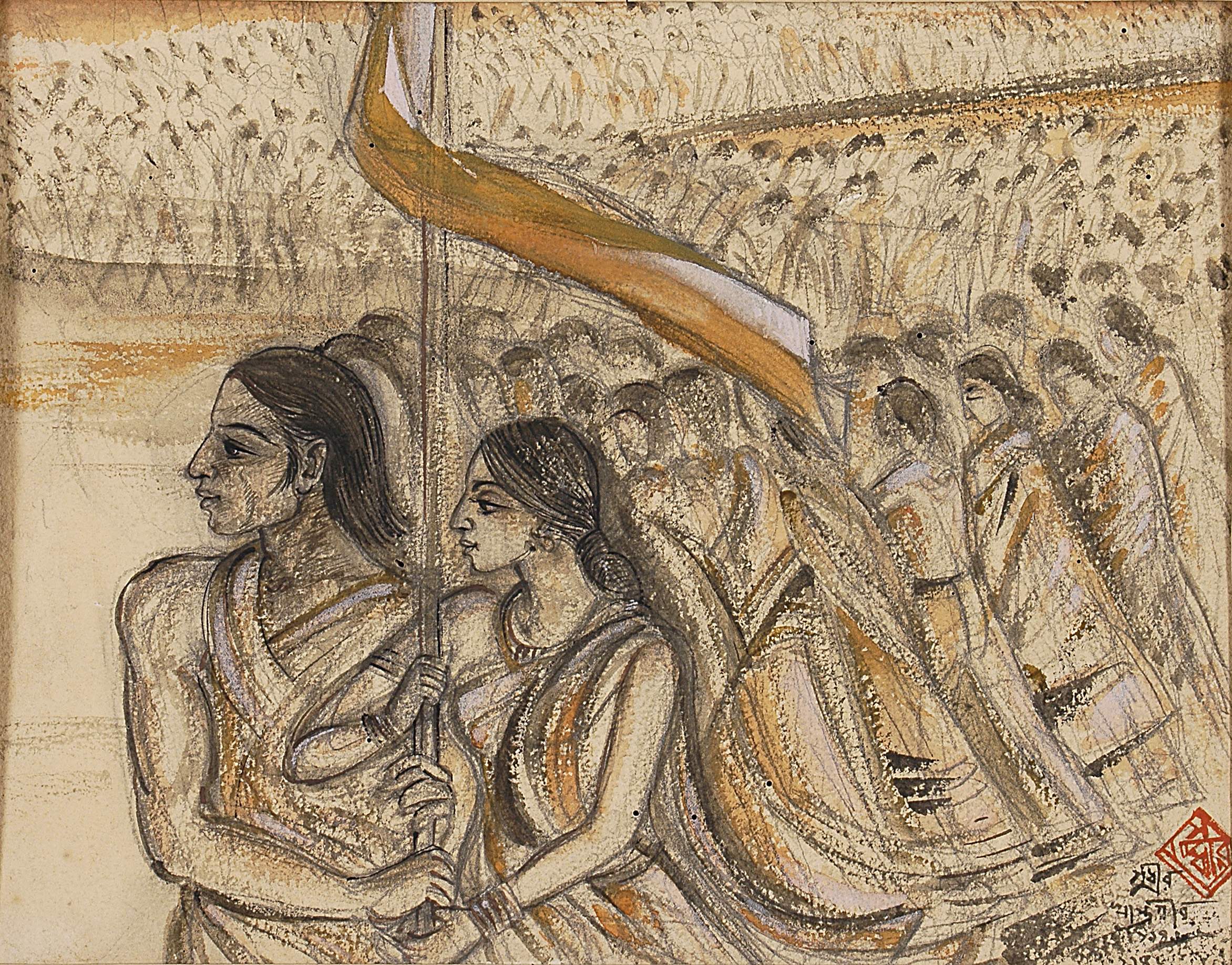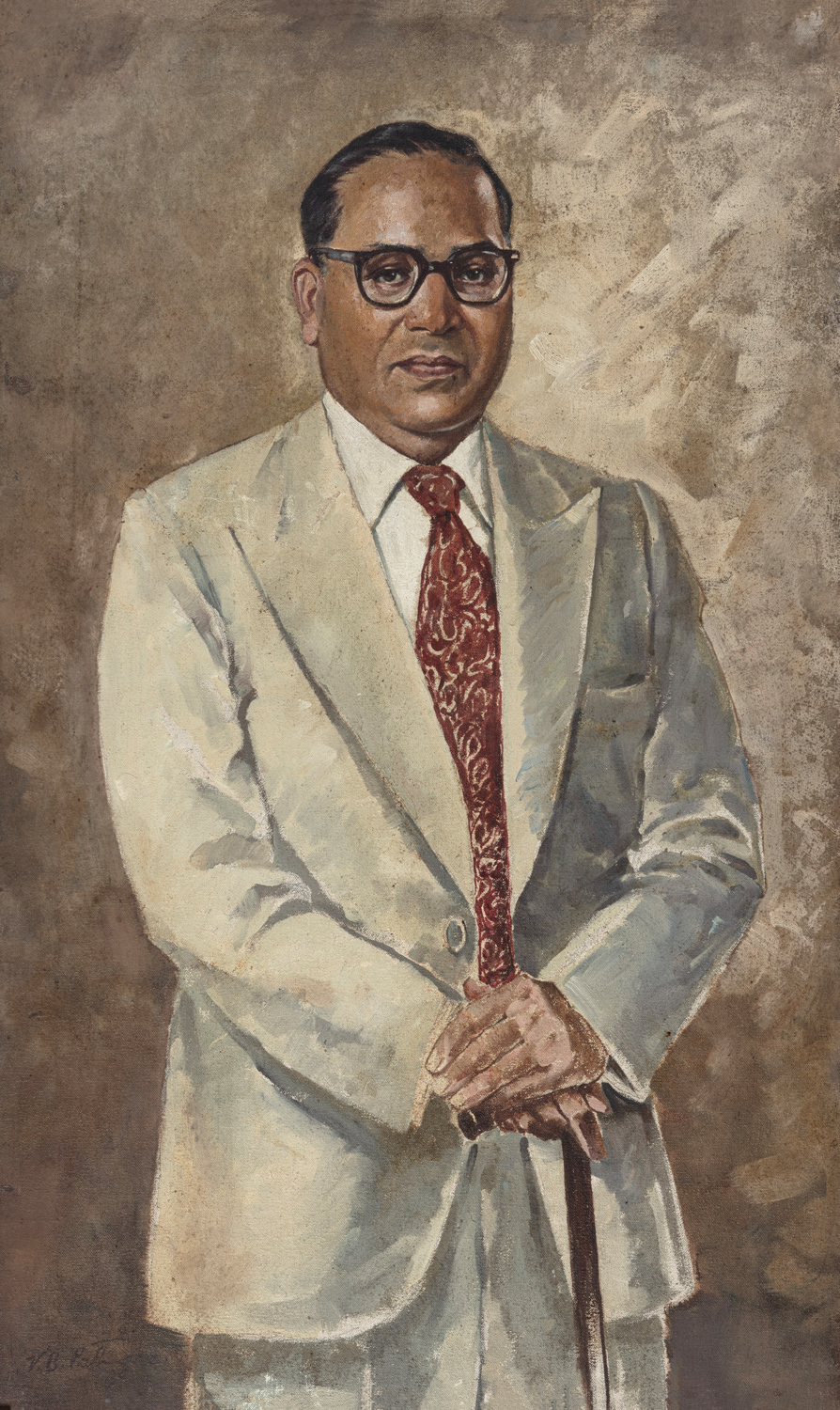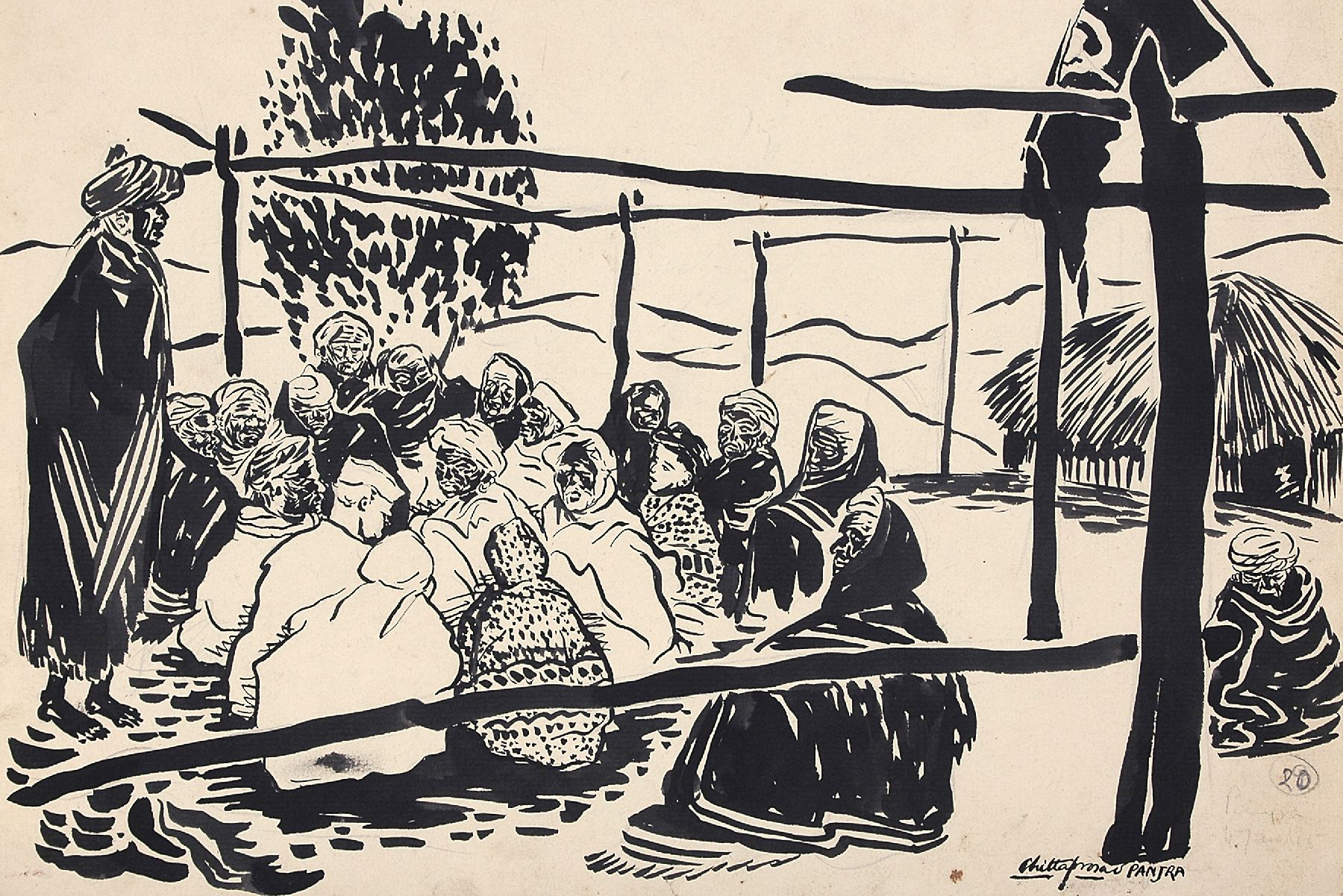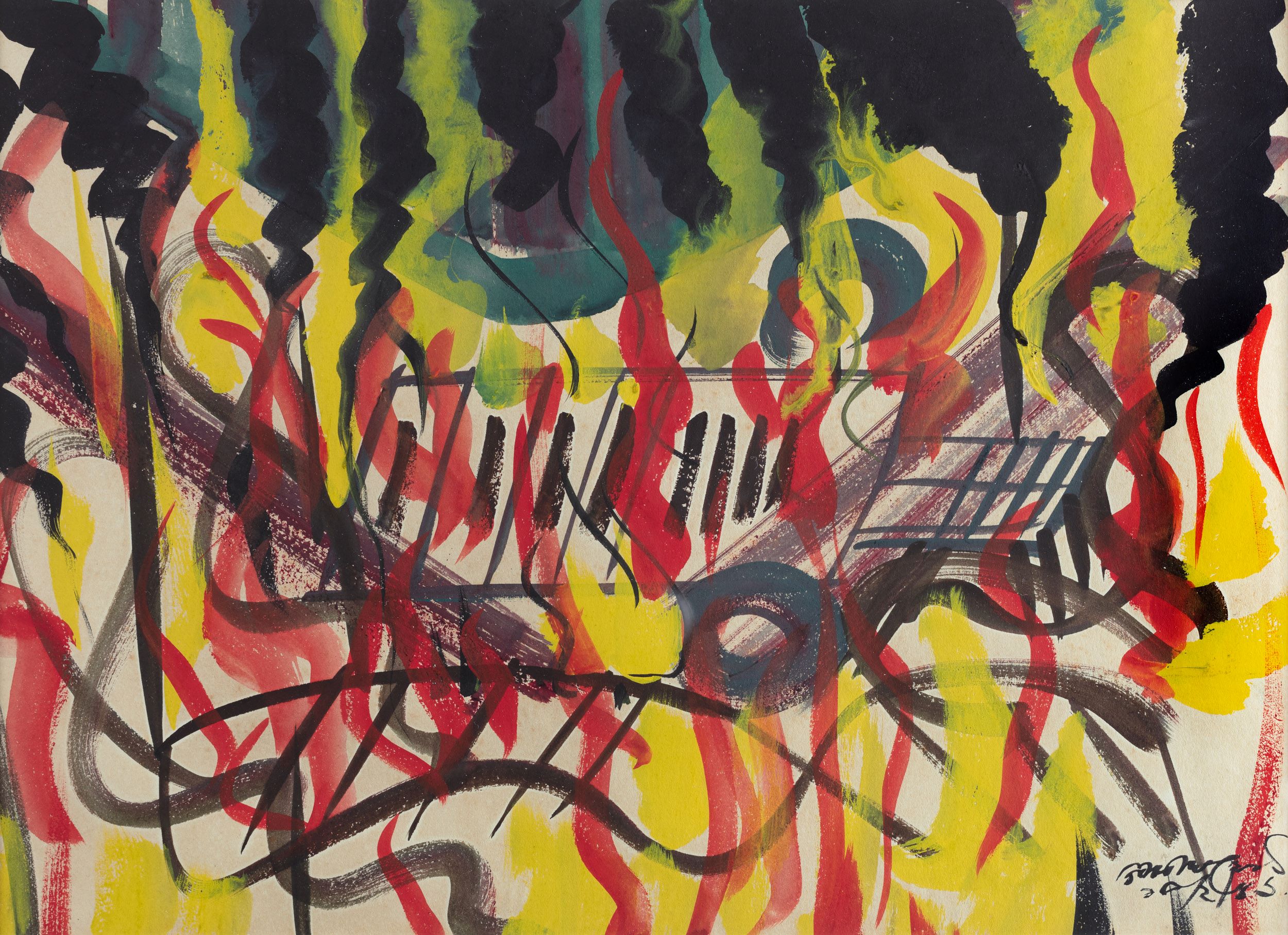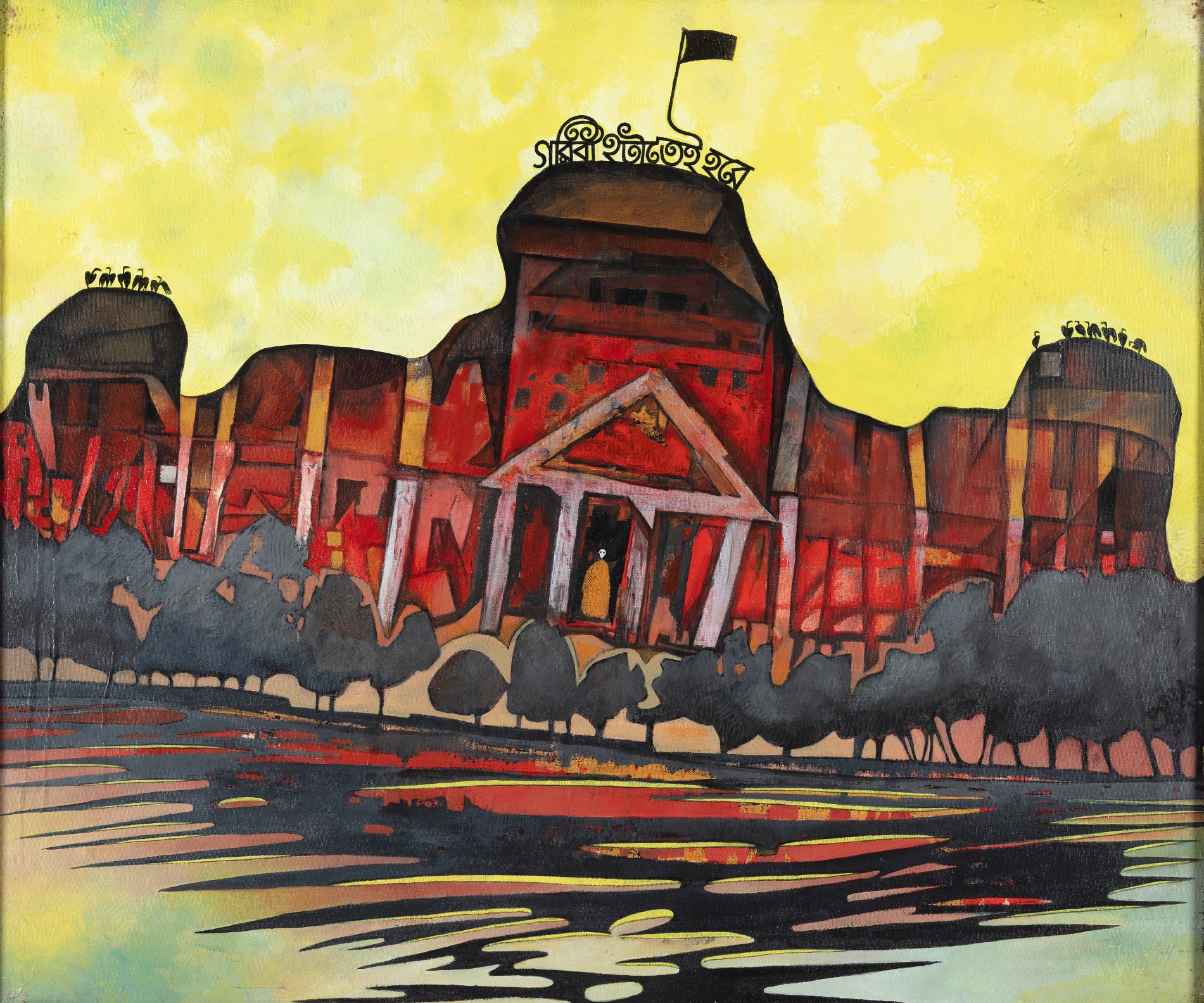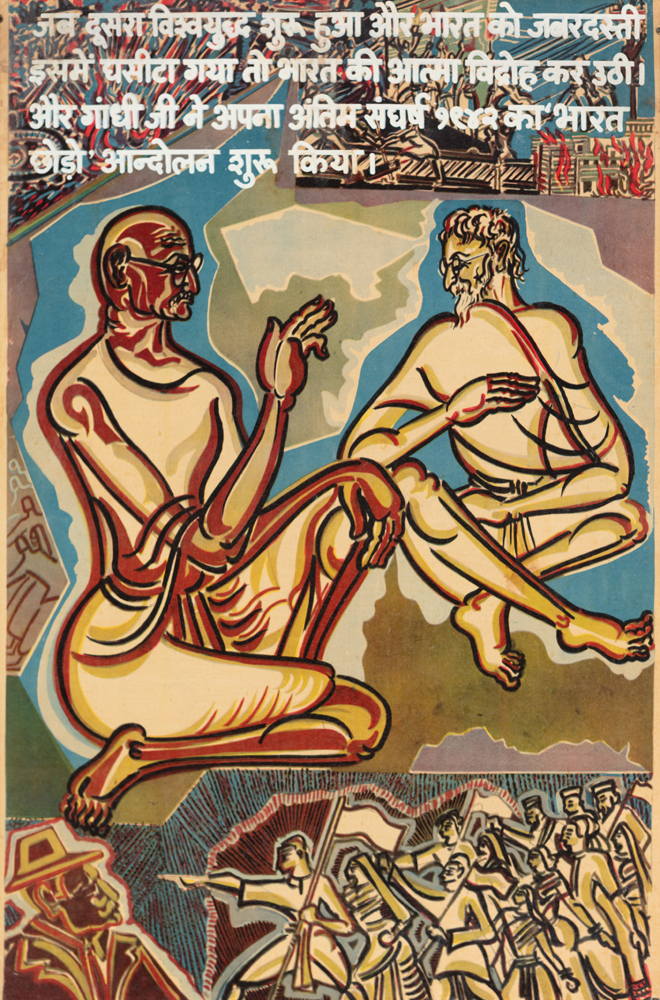Freedom in Sight
As India edged closer to independence, the 1930s and ’40s saw the nation erupt into civil unrest and communal turmoil and escalating state repression. Amidst the shockwaves of the Second World War, the revolutionary fervour of anti-colonial movements, the turbulence of riots and eventual partition, artists responded with searing visuals that documented, dissected, and sometimes even stood opposed to the majoritarian political currents. This resource pack brings together artworks, posters and prints from the DAG collection to enable educators to critically unpack crucial moments of India’s history in the final ‘stormy decades’ leading up to independence.
Sobha Singh
When the Goal was in Sight 1945
Offset Print on Paper
Chittaprosad
Untitled
Ink on paper
Sudhir Ranjan Khastgir
Untitled 1946
Watercolour and graphite on paper
V. B. Pathare
Dr Ambedkar 1980
Oil on Canvas
Chittaprosad
Panjra
Brush and ink on paper
Satish Sinha
A Refugee Camp in South Calcutta, 1946
Watercolour and ink on paper laid on cardboard
Gopal Ghose
Untitled 1946
Gouache on paper pasted on mount board
Prokash Karmakar
Oh Calcutta/ Writers' Building 1999,
Oil and acrylic on canva
Chittaprosad
Untitled 1947
Ink on paper
Unidentified artist
Gandhi poster c. 1960
Offset print and serigraph on paper
Answers To The Objections Commonly Raised Against Freedom For India
SAADA
Ever wondered how the British were able to rule India for 200+ years despite resistance? Despite the atrocities they committed, the British portrayed themselves as the flagbearers of civilised society. History will always glorify the hunter if there’s no historian of the lion. Thankfully, we have sources that tell us a different story.
Read through this pamphlet published by the American League for India's Freedom to explore a counter against the British narrative of colonial India.
Declaration of Purna Swaraj (Indian National Congress, 1930)
Constitution of India
Poorna Swaraj or the explicit call to throw the British government out of the country is something you read extensively in your textbooks. But what exactly was this call word to word?
Read the original resolution to find out what stands as a poignant reminder of the ideals and aspirations that have continued to guide this sovereign nation to this day.
Manuscript of the Progressive Writers Association
Sajjad Zaheer archive
The Manifesto exhorts Indian writers and, by extension, artists to reject romanticism in favour of representing the material conditions of life in India.
Do you think art and literature can shape sentiments and contribute to social and political movements?
Indian radical politics
The National Archives
Brits taught, trained and assimilated Indians up to their standards only to use them as per their liking. But soon tensions followed as the rise of intellectuals gave rise to demands of decolonisation and self-governance.
Read the reaction of the colonialists to the rising Indian educated class and their radical participation in denouncing colonialism.
MARCH TO FREEDOM: REFLECTIONS ON INDIA'S INDEPENDENCE
Delhi Art Gallery
Get a glimpse of the DAG exhibition that re-interprets the well-known story of the Indian freedom struggle and anticolonial movement beyond politics, politicians, and battle through art and artefacts.
1,000,000 INDIANS ON THE MOVE (1947)
British Pathe
In your history lessons on the Partition of India and the creation of the new country of Pakistan you must have read about the mass displacement of people across the Western and Eastern borders.
Watch this British Pathé clip to get a glimpse of the on-ground conditions in Punjab as refugees covered miles on foot carrying their meagre possessions through a riot-worn land.
TRAIL OF BLOOD THE CALCUTTA KILLINGS OF 1946 AND ITS AFTERMATH
Institut für die Wissenschaften vom Menschen
On 16th August 1946, as India headed towards partition, Calcutta witnessed its biggest Hindu-Muslim riot, which led to the death of more than 4000 people. This tragedy is known as the ‘Great Calcutta Killing’. It marked an apex point amidst the series of mass-scale communal violence leading towards the partition of India.
It marked an apex point amidst the series of mass-scale communal violence leading towards the partition of India. ‘Trail of Blood’ is an attempt at to recreate those collective memories and to reconnect them with contemporary India.



